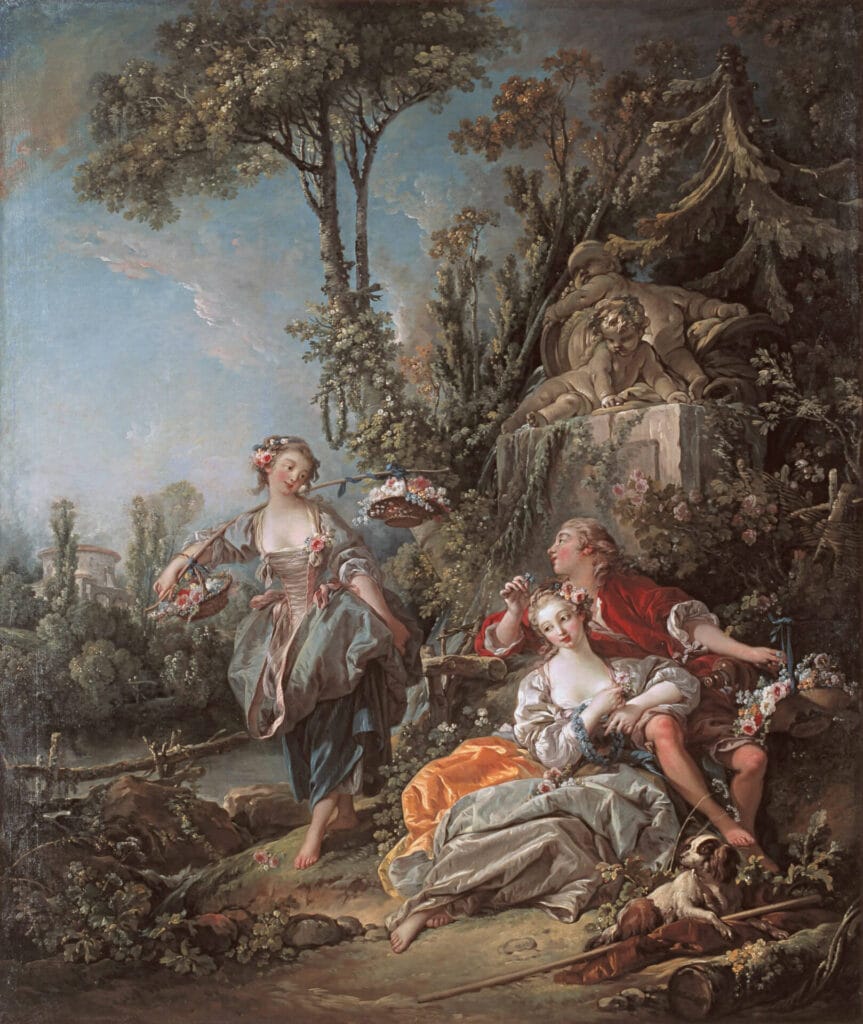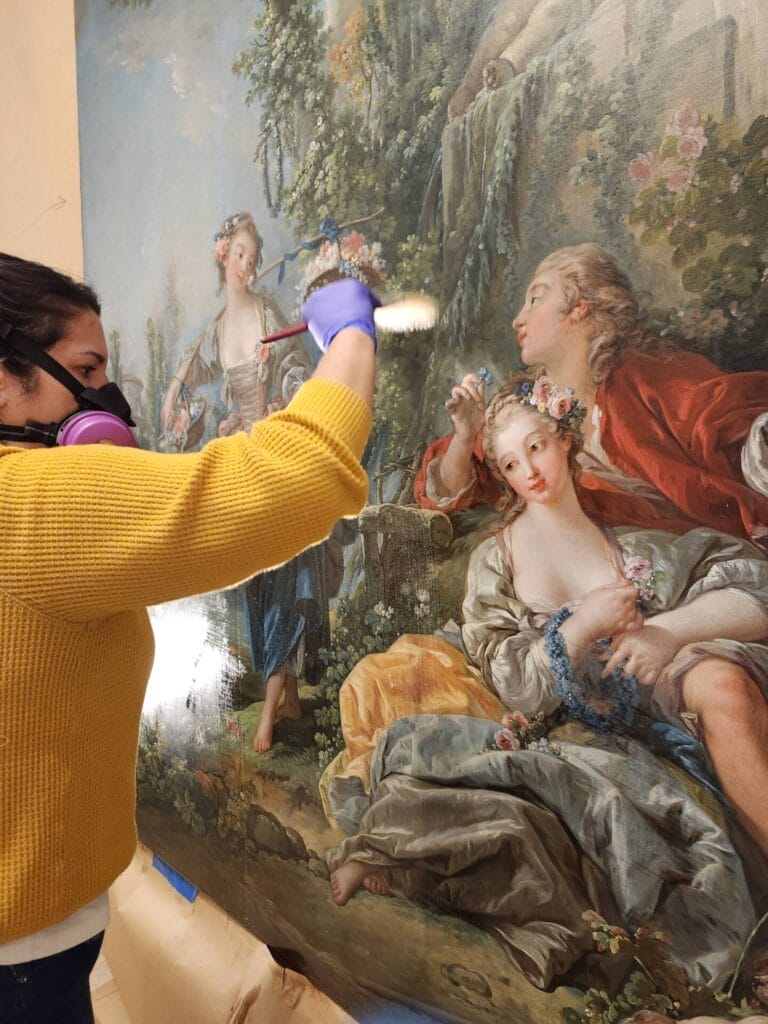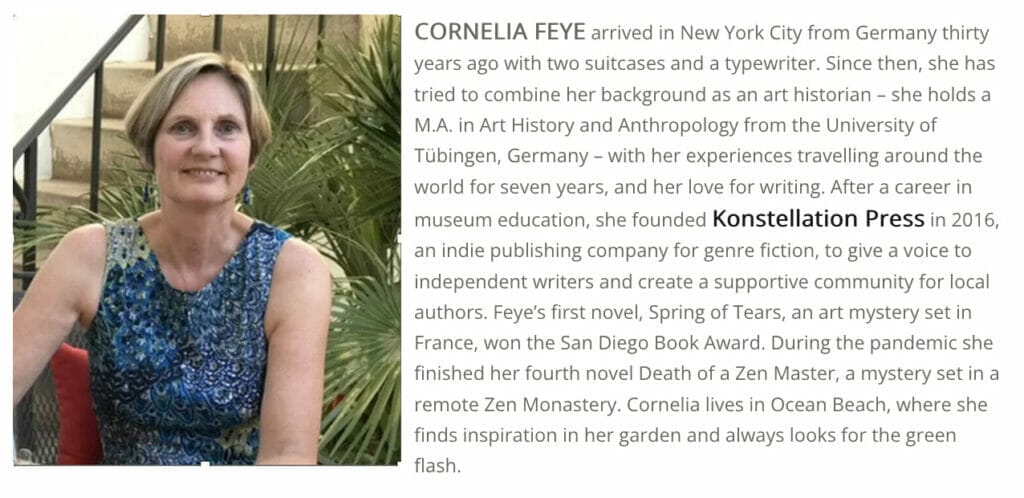by Cornelia Feye
April 16, 2024

The scene depicted in François Boucher’s painting Lovers in the Park is like a Rococo version of the reality TV show The Bachelor. In 1758 Boucher painted it in pastel colors of pink, light blue and pale green, because, as he said, “Nature is too green and the lighting is terrible.” A young, handsome bachelor in courtly, fashionable clothes sits under a tree in the park. In his arm, he holds an equally attractive young woman, wearing a very low-cut silk dress. In her hand and hair, she has pink roses and her face has the dreamy expression of being in love. However, her young beau already turned away from her toward another young woman bringing baskets filled with flowers and fruit. She looks at the young bachelor with a flirtatious smile, and the viewer wonders: Will the lovesick young woman be betrayed? Has another women caught the bachelor’s eye? A small dog at the feet of the lovers witnesses the whole scene. He knows what’s going on. Two putti, or cupids, sit on a stone pedestal behind the lovers. One faces in the direction of the maid bringing the basket, the other toward the young couple. The viewer has to decide which way it will go.
Lovers in the Park was the first painting the Timken Museum acquired in 1965. It’s also its biggest, and it never left the building in 60 years, because it’s just too big. Originally, the painting would have hung in one of Madame Pompadour’s chateaux or in a boudoir of another aristocrat from Versailles. Its size alone would have made it a conversation piece. “It’s tempting to say that the lighthearted, pleasure-seeking sensibilities of the ancien regime (not to say, frivolous) subject appeals to audiences in our time,” says Derrick R. Cartwright, Ph.D., the Timken’s director of curatorial affairs.
Cartwright considers the painting the most important 18th century art work in San Diego, and so the Timken decided it should have a complete make-over, in full view of the visiting public.
Alexis Miller, head of paintings conservation at the Balboa Park Arts Conservation Center (BACC) is in charge of the project which began last October. I asked her what was wrong with the painting to need restoration. “Nothing,” she said. It is not falling apart, it is in stable condition, but aesthetically it didn’t look so fresh anymore. After an extensive examination including thorough scans with x-ray, infrared, ultraviolet light, Miller began removing surface grime and discolored varnish. She repaired minor damages and paint loss at the edges and applied inpainting where abrasions occurred i.e. the putti, and the man’s face, with tiny brushes knitting together the painting. I asked her how she was able to match the almost 300-year-old original paint colors. “Through experience, intuition, technique and trial and error,” she said. “Trial and error?” I asked aghast. She reassured me that every action in restoration is reversable, so an error in color can be easily removed. The process is almost completed and after a final spray coat of—removable, non-discoloring—varnish, the painting will go back on view in the Timken main gallery in the beginning of May. “Once completed, the painting will exhibit vibrant colors and enhanced depth,” Alexis Miller says.

“Having the Boucher painting undergo complete restoration at same time we have Kehinde Wiley’s Equestrian Portrait of Prince Tommaso of Savoy-Carignan, also a large work, has been instructive, too. Who gets depicted, how they are treated/elevated by the artist, and what relationship they have to spectators all are up for debate when you have two compelling works like these on public view. The Timken aspires to be a place where conversations like these can happen,” Cartwright added.
The comparison between the two paintings is striking. Boucher depicted young, beautiful, aristocratic, white subjects, while Kehinde Wiley replaced a white prince painted in the 17th century by van Dyck on his white horse with a powerful black man. The question of who gets depicted and who gets represented has changed dramatically from the 18th to the 21st century.
After observing the entire restoration process and drawing these comparisons, the public may be able to look at the art at the Timken and its powerful narratives in a new way.







